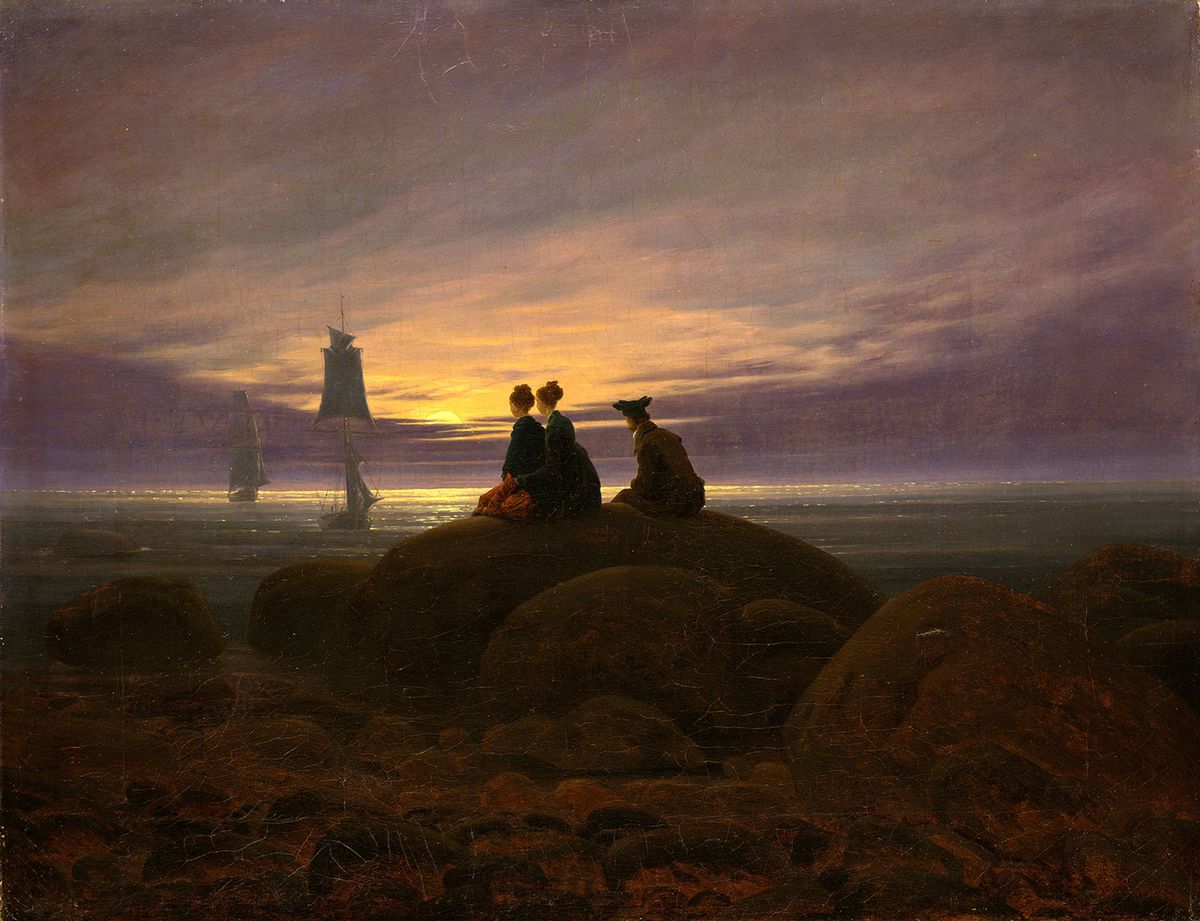There was a time when the landscape painter Caspar David Friedrich was little known outside his native Germany. Now he is regarded as one of the most prominent artists of the Romantic era. His arresting designs, with their wintry trees, ruins and powerful light effects beam out from book covers, posters, and CDs throughout the Western world.
The reasons for this change relate to the retreat since the 1960s from a dominating Modernist aesthetic that gave priority to a particular type of painterly abstraction far removed from Friedrich’s style and interests. The artist has been treated more kindly in the Postmodernist era, with the growth of interest in allusion, representation and reference. There has been greater recognition of the genuine originality of Friedrich’s reshaping of the forms of landscape to endow them with a new symbolic and emotive impact. A sense of isolation and yearning pervades his pictures, appealing to contemporary feelings of alienation. It is an indication of this that Friedrich’s Two Men Contemplating the Moon, 1819, in which two figures peer thoughtfully at the night sky beneath a craggy tree, should have provided the visual inspiration—by the author’s own account—for Samuel Beckett’s celebrated play about doubt and uncertainty, “Waiting for Godot”.
As Friedrich’s star rose internationally, so scholarship around his work grew rapidly in his native Germany. A key moment came in the 1960s when the art historian Helmut Börsch-Supan established a clear visual analysis of his stylistic development and followed this with an exhaustive catalogue raisonné. However Börsch-Supan’s iconographic reading of the artist’s imagery was too narrow for most commentators and has been challenged by many more sophisticated approaches. Key amongst these are Werner Hoffmann’s characterisation of the artist as a proto-Existentialist and Werner Busch’s more sober interpretation of him in terms of his Protestant background. Outside Germany there has also been the intriguing reading of Friedrich by Joseph Koerner in relationship to his country’s larger political destiny.
Caspar David Friedrich and the sublime
No greater sign of Friedrich’s status can be found than the sheer number of monographs on him available in English. Before the 1960s there were none. Now there are more than 30. Many are large and richly illustrated. The present work can claim to be amongst the most sumptuous of these—as well as the most expensive. A large and weighty volume it provides a splendid and extensive visual record of the artist’s work, including many fascinating details.
The work is a pictorial treat. There is often a problem in glossy books of this kind in providing a text appropriate to the occasion. In his introduction here the author shows an awareness of this problem. Johannes Grave writes in a direct manner and keeps his scholarly references succinct. He also orchestrates the book in an attractive way, introducing each topic relating to the artist’s life and work through the discussion of a major picture. However, he has an axe to grind. Grave first came to prominence with a study on Friedrich and the sublime—that aesthetic of awe and fear that was so prevalent in the later 18th century. He is keen to emphasise the formal side of Friedrich’s art, speaking of the artist’s “determination to underpin the landscape with a structure that is devised purely on the basis of the picture plane”. This helps us appreciate Friedrich’s innovative approach to landscape. However this dimension is stressed at the expense of other issues. While this is certainly excusable in a specialist study it is more questionable in a book of this nature, which is aimed at a broader readership.
The non-specialist reader (particularly outside Germany) might have preferred to have more about the cultural and political context of Romantic Germany that stimulated Friedrich to take landscape in new directions. There is very little here, for example, about the literary Dresden Romantics or of Philipp Otto Runge, the Blake-like visionary painter who was prominent in Friedrich’s milieu and whose concept of “universal landscape” was so challenging for the times. Yet despite this limitation, the book offers a clear introduction to the current state of Friedrich scholarship as well as being a valuable visual record.


